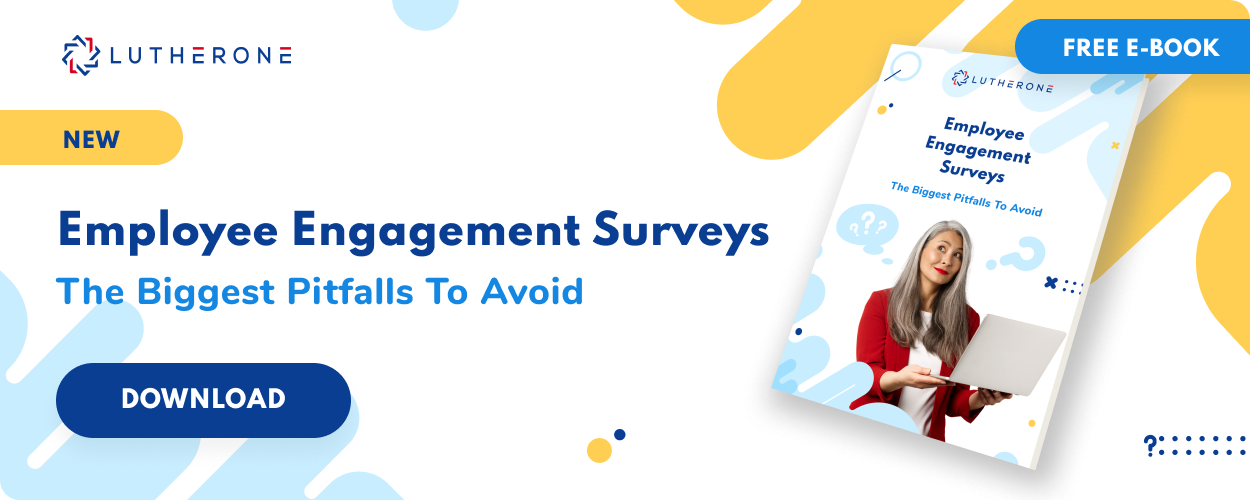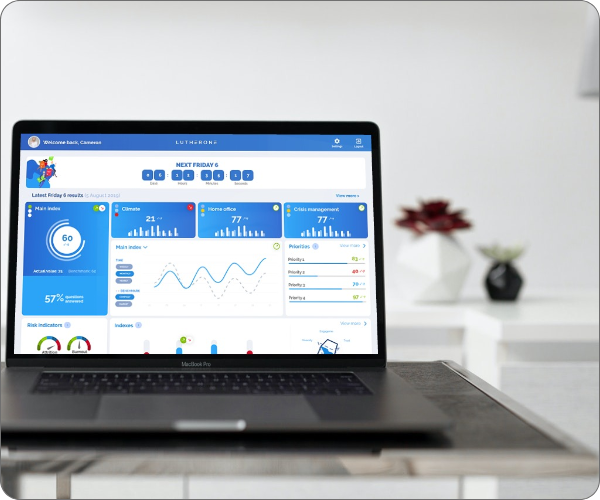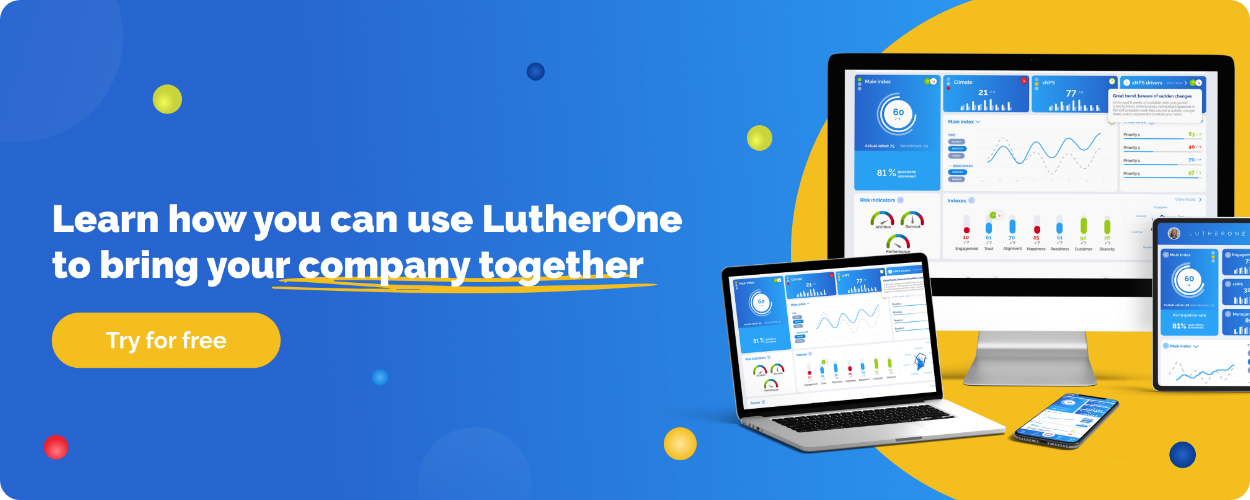EMPLOYEE ENGAGEMENT
Before You Go: The Changing Landscape of Employee Loyalty Amidst the Pandemic

The decision to change employers usually takes a while to mature. That is not to say that such an event couldn't happen that could trigger a rapid wave of departures. Departures following a specific event can be linked, and it's no mystery why people leave in such cases. This type of trigger could be, for example, the arrival of a new manager who doesn't “sit well” with the team.
However, companies also suffer departures that aren't caused by any obvious specific event. These significantly contribute to the fluctuation rates and cause companies to often lose experienced and capable people.
Of course, before we explore specific factors – and how they evolved in the past months – one to mention is a natural need for change from the employee's side. Such periods come cyclically in waves and usually have a range of about 3-5 years. As in personal relationships, the employee's relationship with the company is evolving and there are stages when we may have opportunities from outside or stumble upon problems on the inside.
Getting The Data Right: Good Questions Yield Better Answers
When it comes to understanding employees’ desires and struggles, traditional methods of data collection often rely on annual snapshots to discover and explain behavioral changes. This can be risky even during normal times as they often lead to incorrect conclusions as the results are skewed by the influences at the time of collection of responses, as well as the overall inability to observe changes, trends, and patterns over time. During times like these, when change is the only constant, continuous listening is a crucial element of understanding and addressing new challenges arising from navigating the uncertainty.
Thanks to the continuous mapping of various engagement factors using our survey solutions, LutherOne can combine various data & insights with information about who leaves the company and when. Thanks to advanced analytics and predictive capabilities, we get to see what precedes these departures. This allowed us to explore how pre-attrition drivers have been changing since the onset of the pandemic, as well as the remote working boom.
Creeping Disillusionment & Pre-attrition Drivers' Shift
Although the time of departure and individual motives or a mix of the two may vary for specific people, some things are common for employees on their way out. While some factors may come as obvious, some new ones made their appearance during the pandemic and gained surprisingly high importance.
Of course, for people who leave the company, we see long-term lower answers to areas related to how they feel at work and questions mapping their loyalty, i.e. willingness to not let oneself be tempted by another offer - roughly 6 months before the actual departure, their responses to the question "I want to work in the company for at least another year" drop.
While some factors may come as obvious, some new ones made their appearance during the pandemic and gained surprisingly high importance.
But even though it might seem like basic questions addressing loyalty together with the team & company atmosphere are a timely indicator of a possible departure, the reality is different and much more complex.
Trust Takes Years To Build, Seconds To Break
It is very typical for outgoing employees that about a year before they leave, the feeling that they have the company’s trust and support gradually declines.
This is, amongst other things, connected to the feeling that they don’t have the opportunity to make their own decisions, they have troubles organizing their work, lack being able to freely express their opinions, or come up with suggestions for improvement and innovation. And just like we would see a growing importance of mentioned factors, we could also observe that these were often pushed aside to give space to firefighting.
During moments of truth, one of which a worldwide pandemic undoubtedly is, people expect their employers to provide safety & security. Especially towards the peak of the second pandemic wave, we could see people’s expectations as to how well their employers cared for them, peak, putting yet another loyalty indicator in the spotlight.
Subsequently, in the last 4-5 months with the company, the perception of the business executives and management deteriorates significantly, evaluation of top management decreases, the feeling that management acts in accordance with company values decreases, and that the company is able to respond to changes in the market and the willingness to recommend the company decreases sharply (employee NPS).

Never miss a LutherOne article or e-Book: SUBSCRIBE
Team Efficiency Takes a Spotlight
It’s no surprise that when people are in a room together, collaboration, developing plans, or understanding the overall team’s sentiment is much easier. Dispersed teams tend to face breakdowns in communication, and quite obviously, data confirms that team efficiency takes a declining trend with prolonged remote working. But what’s even more concerning is the fact that over the pandemic, team efficiency made its way to the top of the list of loyalty drivers.
Work-life Balance Paradox
When a house, the sanctuary of personal life and relaxation, becomes an office, and the boundaries between personal and business matters get blurred, sustaining a healthy work-life balance gets more complicated. Many months before leaving, we see a gradual decline in the work-life balance indicator, which remains unchanged until a point when at-risk employees make a conscious decision to leave. It is at this particular moment when their work-life balance starts improving again as they lose the last bits of motivation to do anything extra and start reorganizing their lives accordingly.
Advanced continuous listening by LutherOne keep an eye on many crucial challenges that include employee loyalty, burnout, and performance by not only predicting future events months before they happen but also by offering easy-to-understand recommendations that are tailored to individual teams & managers. So even though loyalty can be a very complex topic, solutions can be very simple when you employ some smart tech.


